
Issue Contents

Click on any image to open a bigger version in a new tab. Ctrl+w will close the new tab and return you to Carfree Times.
More Earthquake Photos from Bhaktapur
These photographs were not directly related to the content of the Feature Article on the earthquake but may nonetheless be of interest.

What the news didn't show: many buildings were damaged, but the majority survived.
2015-04-26, before major aftershock
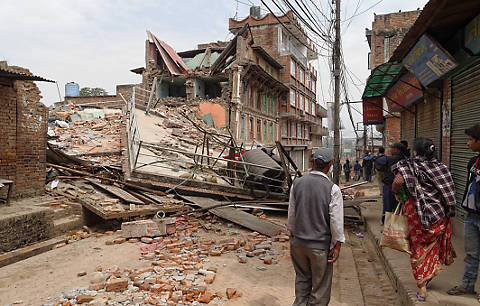
A major mistake: adding new stories using modern methods on top of older stories.
2015-04-26, before major aftershock
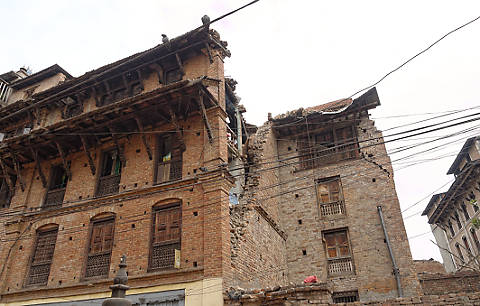
Note the massively thick brick walls. Adding thickness seems to offer virtually no additional resistance to earthquake loads.

2015-04-26, before major aftershock
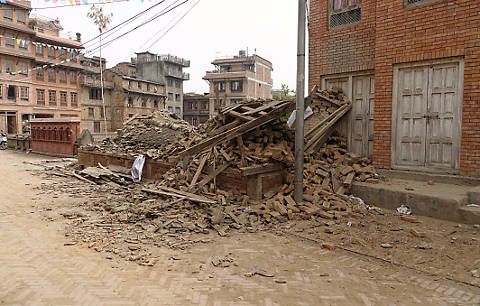
All that remains of a parti, sometimes known as a rest house, where people often socialize. Many of them collapsed.

2015-04-26, before major aftershock
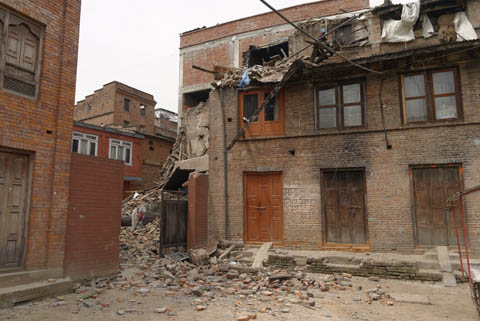
In most parts of Bhaktapur, damage was very spotty. Many buildings suffered little or no damage, but neighboring buildings were heavily damaged or destroyed.

2015-04-26, before major aftershock
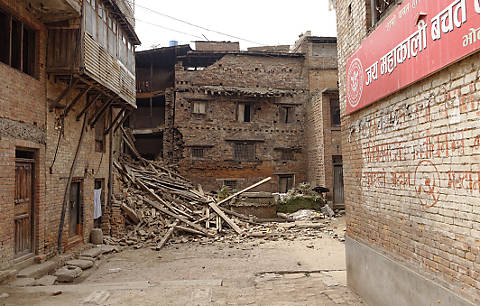
I believe I detected a number of instances of foundation failure likely caused by liquefaction, although I saw no direct evidence of this. The old building probably protected its occupants but will have to come down.

2015-04-26, before major aftershock

A pair of buildings with partially collapsed upper floors. It is likely that the intensity of the shaking was worse on the upper stories.

2015-04-26, before major aftershock
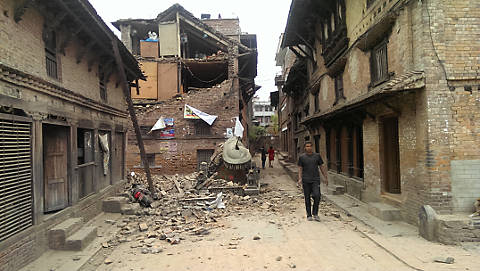
A building that threw its gable end.

2015-04-26, before major aftershock
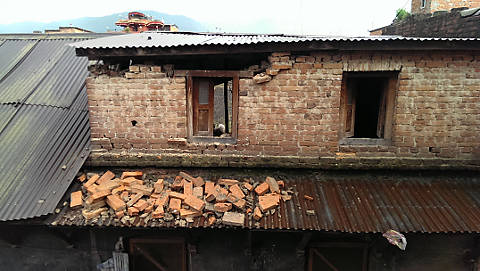
This is the only damage to the massively-constructed building across the street from us. A much lighter (single-wythe) addition was put on top, and the left-rear corner collapsed. The front dropped some bricks into the street and is in perilous condition.

2015-04-26, before major aftershock
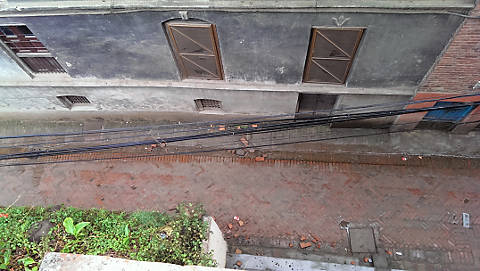
Bricks dropped into the street by the building shown above.

2015-04-26, before major aftershock
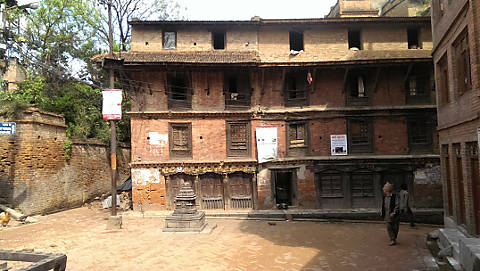
This building might have fared better without the addition of another story, for which it was probably never designed.

2015-04-29
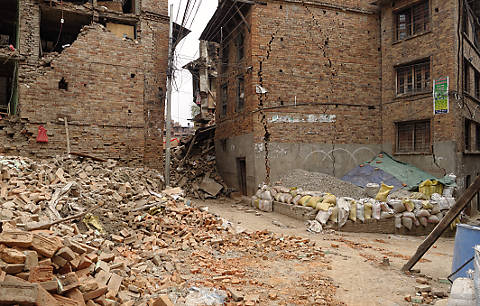
The worst street blockage in our part of town; it got worse in the aftershock.
2015-04-26, before major aftershock
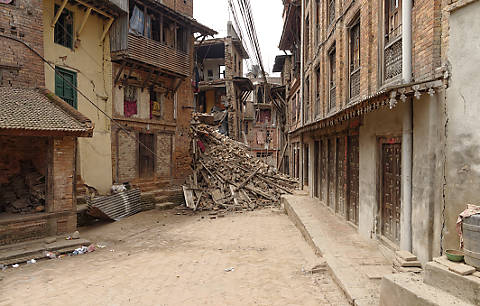
The blockage viewed from the other side.
2015-04-26, before major aftershock
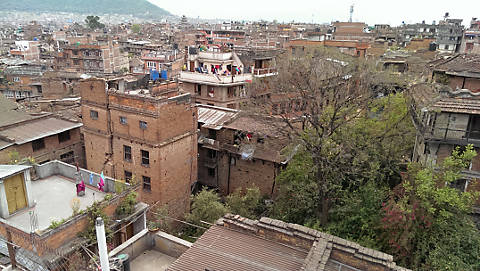
2015-04-26, before major aftershock
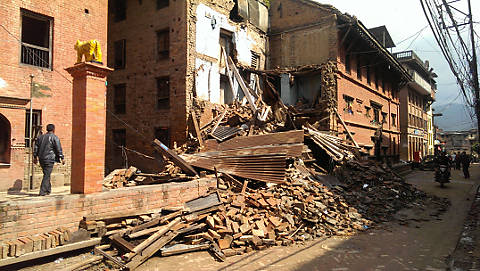
2015-05-02
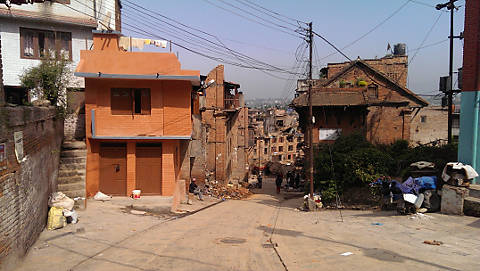
2015-05-02

2015-04-26, before major aftershock
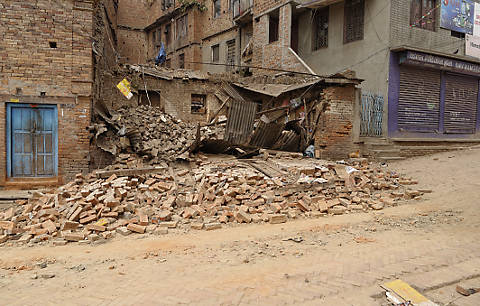
2015-04-26, before major aftershock
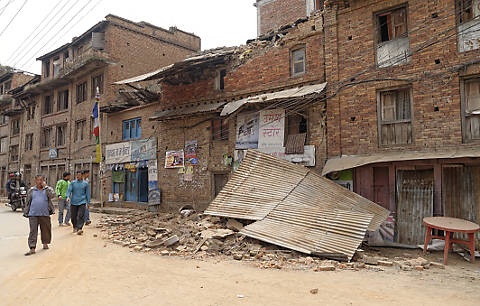
2015-04-26, before major aftershock
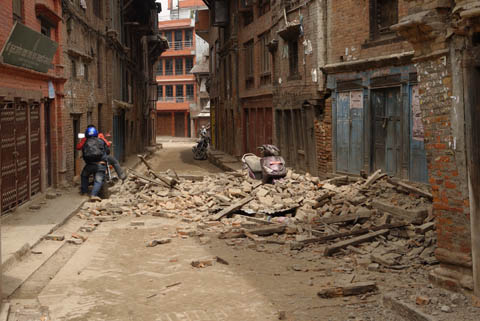
2015-04-26, before major aftershock
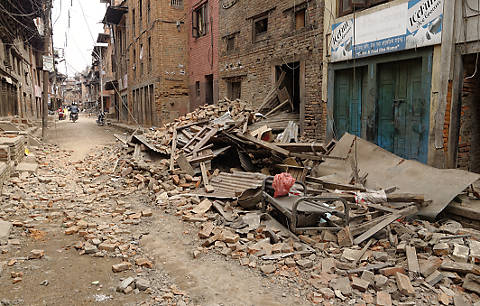
2015-04-26, before major aftershock
|

|

Announcements
Major Film: Recovering from Disruption: A Comprehensive Approach to Building a Better, More Sustainable World
Carfree.com, in cooperation with Work for a Better Bangladesh, is hard at work on a one-hour video that considers the many challenges to sustainability that we face and offers a full set of solutions. We aim to have the film released in plenty of time to influence the Paris climate talks in December. Work will resume on the film in a few days.

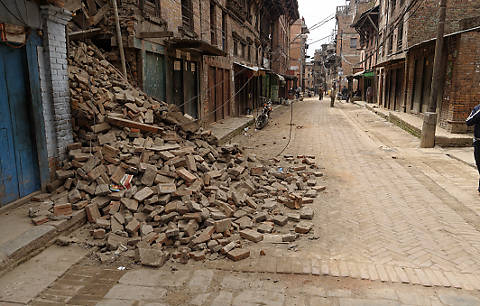
A view of post-quake Bhaktapur you did not see on CNN. In the far distance is another badly damaged building, but most of this street remained intact.

2015-04-26, before major aftershock
All photographs in this issue were taken in
Bhaktapur, Nepal by J.H. Crawford
Feature Article
The Nepal Earthquake from the perspective of Bhaktapur
by J.H. Crawford
As everyone must now know, Nepal was struck by a large earthquake last week. This Feature Article is an early analaysis of what happened and why, and a look at Nepal's future. I live in Bhaktapur, one of the harder-hit areas of the country.
Event
I was in our house near Dattatraya Square when the 25 April 2015 Nepal earthquake struck minutes before noon local time. The initial shake was magnitude 7.8, 7.9, or 8.1 depending on your source (Wikipedia reports all three numbers.). Ground motions were heavy and comparable to my experience of the Loma Prieta earthquake in San Francisco in 1989. The Kathmandu Valley is reported to have shifted 3m (10 feet) to the south.
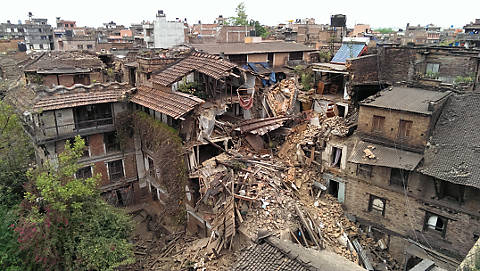
This tragedy played out right behind our house. An elderly man was killed in the fall of the building at center-right. The beautiful building at center-left partially collapsed along with its neighbor. If you click through to the large image, you will see that the remaining part is damaged beyond repair. Two other buildings suffered significant damage. There are quite a few clusters of this nature, which suggests "fratricide," one building damaging its neighbors.

2015-04-26, before major aftershock
The epicenter (which is the place where the fault rupture starts, not necessarily the center of damage) was about 80 km (50 miles) to the northwest of Kathmandu. The fault then ruptured in an east-southeasterly direction, which explains why there was relatively little damage to the west of the epicenter. The largest ground slip occurred in an area only 20 km (12 miles) north of Kathmandu.

Some old houses survived, some didn't.

2015-05-02
This was a violent but not extreme earthquake. For comparison, the Alaska earthquake of 1964 was magnitude 9.2, and the 1960 earthquake in Chile was 9.5, which is about as large as earthquakes get and roughly 2000 times as energetic as the recent earthquake in Nepal. The Mercalli Intensity reached IX, whereas the scale runs up to XII. Still, a magnitude 8 earthquake is a major event, and significant damage always occurs. In areas with many buildings that are not earthquake resistant, damage is very heavy.
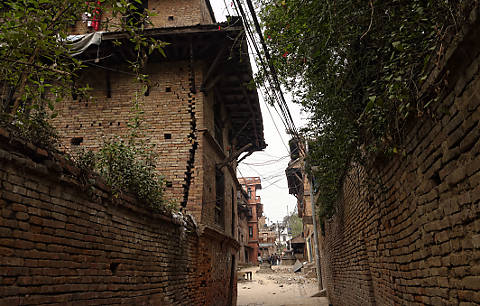
The end of this house collapsed a few hours later, in the M6.7 aftershock.

2015-04-26, before major aftershock
The initial shock was soon followed by a major aftershock of magnitude 6.6. The next day, an aftershock of magnitude 6.7 struck in the early afternoon and did considerable additional damage, collapsing buildings that had been damaged in the initial shake.
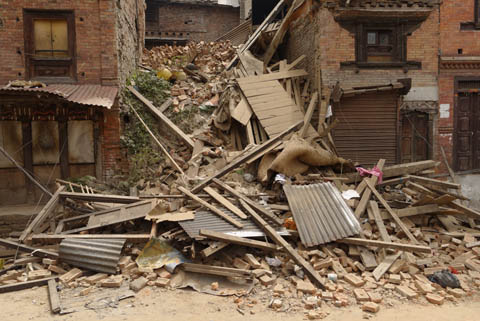
There appeared to be many instances of one building damaging one or two others, but in this instance, the neighboring buildings suffered little damage.

2015-04-26, before major aftershock
Consequences
The full death toll will probably never be know with accuracy, but as of press time it had passed 7,000, with 14,100 reported injured. In the worst-hit mountain regions to the north of Kathmandu, damage was extreme, with very heavy loss of life. The death toll in Bhaktapur stands at 269 but is expected to rise, but many more were feared to have been killed in collapsed buildings on the southern edge of the city, an area on a steep hillside dropping down to the river. This is an area of exceptionally narrow streets with buildings old enough that they had little designed earthquake resistance. The famous Durbar Square, locus of some of the most important temples and the former palace, was significantly damaged, with four buildings severely damaged or destroyed.
Kathmandu suffered considerably, with very heavy damage in some parts of the city. The death toll was over 1,000. The collapse of the beautiful Dharara lookout tower alone killed approximately 200 people. It had been built with extremely thick brick walls but collapsed none the less (having collapsed once before and been rebuilt).
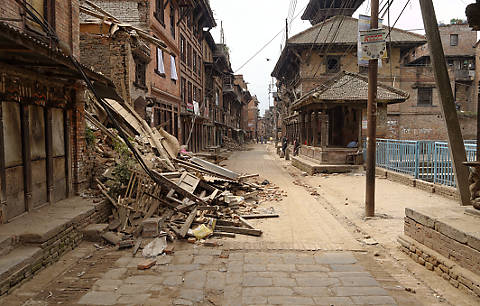
Despite a report on CNN that Nepal had been "nearly destroyed," much of hard-hit Bhaktapur remained substantially intact.

2015-04-26, before major aftershock
It was estimated that about 70% of the buildings in the Kathmandu Valley are safe to inhabit, 20% need further assessment and almost certain repair, and 10% must be condemned or have already collapsed. The damaged buildings are, for the most part, not currently inhabited, which leaves an approximate 30% shortage of housing. Many people have left the Valley to return to their home villages, which will ease the situation considerably, but there is an ongoing housing crisis.

Another example of a building that largely protected its occupants but which will probably have to be demolished.

2015-04-26, before major aftershock
Aftermath
Nepal is one of the poorest nations on Earth, especially away from the bustling Kathmandu Valley. In the remote areas, some of which were devastated, the cash economy almost does not exist. Remittances from Nepalis working overseas constitute roughly one-quarter of the nation's GDP. The tourism industry is an economic mainstay, and the spring tourist season, at least, has been cancelled. With so many of the landmarks for which the nation is famous damaged or destroyed, the long-term outlook for tourism is compromised. However, Bhaktapur was severely damaged in the 1934 earthquake, and many of the famous monuments were rebuilt with German assistance in the 1970s and 80s. This could happen again, but it will take years.
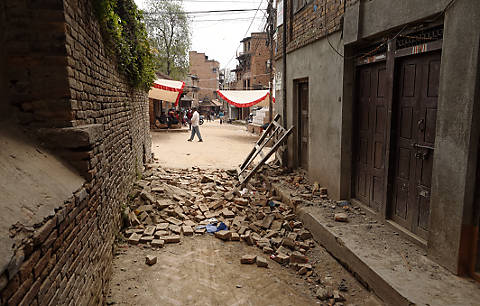
Just minor structural damage is enough to impede passage through the street and is a huge threat to people below.

2015-04-26, before major aftershock
Aid was rushed in from all corners of the world, but most of it arrived after the "golden 72 hours," and the impact was small despite the resources committed. As usual, the few people dug out of rubble as long as five days after the earthquake made headline news, but the deeper, sadder truth of the hundreds, perhaps thousands who were trapped alive in the debris but died before they could be reached remains an untold story of agony.
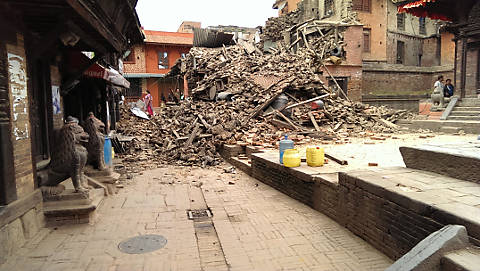
This is a curiously common example of damage. The building is essentially destroyed, but the ground floor walls did not collapse.

2015-04-26, before major aftershock
Lessons
Time and again we have seen that building constructed of unreinforced masonry fare poorly in earthquakes. Low-rise wood-frame buildings and high-rise steel-frame buildings have a good record. Steel-reinforced concrete, today's construction method of choice in most of the world, generally does well (although there are now doubts about the longevity of this material, as the slight differences in the rates of thermal expansion of the steel and concrete appear to cause it to degrade over a span of decades). It is clear insanity to continue to build unreinforced masonry buildings in earthquake country.
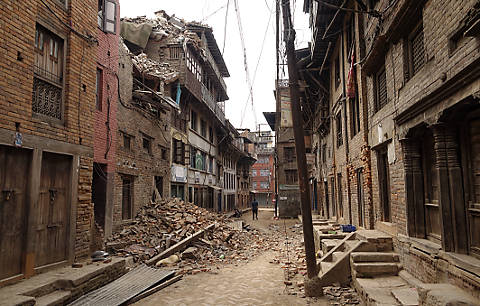
Part of this one building tumbled into the street, partially obstructing it.

2015-04-26, before major aftershock
The Kathmandu Valley is underlain by 100 meters (330 feet) of lakebed deposits consisting largely of clay (which explains the huge brick-making industry here). There is a further 500m (1650 feet) of soft sediment beneath this. The effect of this low-strength sedimentary soil is to convert high-frequency, low-amplitude ground shocks into low-frequency, high-amplitude waves that are exceptionally damaging and lengthen the period of shaking.
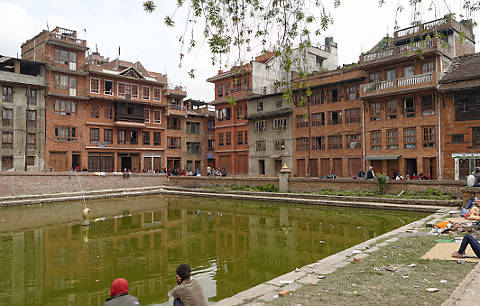
Some places escaped visible damage. This photo might have been taken before the earthquake but was not.

2015-04-26, before major aftershock
So much of the inhabited area of the Earth is located on soft soils in earthquake regions that we probably cannot simply move away from the danger. In particular, the problem of soil liquefaction must be carefully considered. When wet sand or clay soils are shaken by an earthquake, they may instantly loose all their bearing capability. In this earthquake, there were quite a few strong buildings in Kathmandu that tipped over, perhaps when their foundations sank into liquified soil. The problem is compounded by the great weight of reinforced concrete and the non-structural brick that is used to close in the large areas between the concrete pillars. The only protection against this is driving deep pilings into the earth and building on top of them. This is expensive, and the pile driving is disruptive.
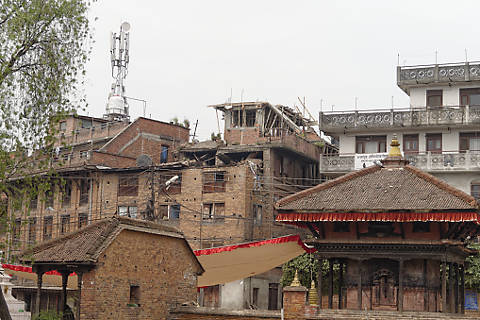
Sometimes upper stories were damaged, leaving lower stories largely intact.

2015-04-26, before major aftershock
I have long toyed with the idea of putting the surplus car-making industry to work building light-weight housing made from pressed-steel parts. These buildings would more or less float on liquified soil, and even if they toppled over, they would provide considerable protection for their occupants, in the same way that an automobile does in a crash. I have, alas, never thought of a satisfactory way to do this. (A close approach is the use of steel shipping containers to provide housing. They are cheap, light, and easily transported. They are, alas, abidingly ugly.)
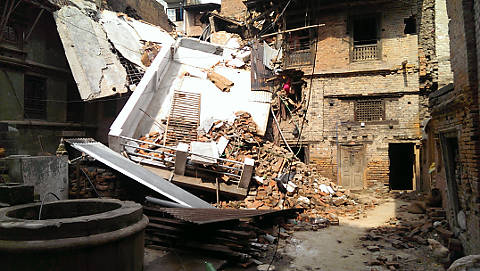
Disastrous result of putting heavy, new-style construction on top of an existing old structure.

2015-05-02
In some places in Bhaktapur, new stories were added to existing buildings constructed with brick pillars. The new concrete slab floors are extremely heavy compared to the traditional wood-and-mud floors, and in a number of cases the lower stories were obviously incompetent to carry the loads imposed by the added stories. Sometimes the worst-affected building was a neighboring one.

Another catastrophic failure of a hybrid building. The old brick columns could not carry the load of a heavy concrete roof slab added later.

2015-04-26, before major aftershock
People here largely do not understand the mechanics of building construction. There is, alas, little effective oversight of construction work, and some contractors cut corners to save money.

Many collapsed buildings blocked only part of the street.

2015-04-26, before major aftershock
The "golden 72 hours" is the length of time following an earthquake during which survivors may be pulled out of collapsed buildings alive. After that, most who might have survived the collapse have already died of thirst and injuries. In Nepal, very little effective foreign assistance arrived before the fourth day. I see only two possible solutions to this problem. One would be to have international teams around the world on hot standby, ready to fly to a disaster zone on an hour's notice. This would require in-place disaster response plans for the affected nation, so that incoming teams could hit the ground running. I doubt whether this will actually be achieved in practice.

This one-story workshop spilled into the street, blocking about half of it.

2015-04-26, before major aftershock
I think a more effective approach would be to follow the Japanese model, in which disaster drills are conducted every September 1st and the necessary materiel for rescue is already present in every locality. The community is already trained and organized, and since the organization is local, rescue efforts can begin almost as soon as the shaking stops. This is neither an easy nor cheap model to implement, but it appears to be the most effective arrangement.
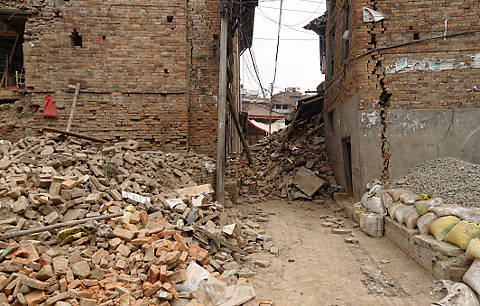
Following the heavy aftershock a few hours later, this street was fully barricaded by heavy debris.

2015-04-26, before major aftershock
It will be claimed that the very narrow streets impeded rescue efforts in Bhaktapur, but I do not think wider streets would have made much difference in most of the town. Emergency vehicles arrived in the very center of oldest Bhaktapur within an hour or two of the shake, despite many downed buildings and closed streets. In the Sukuldhoka section, the buildings were very tall and the streets exceptionally narrow, and here there could be some validity to the claim of a need for wider streets, which would in any case have made the district more pleasant to live in. We have no photographs of this area in this issue, but it was the most heavily damaged and featured in the coverage of the mainstream media. Mainly what is needed is not wider streets but stronger buildings.
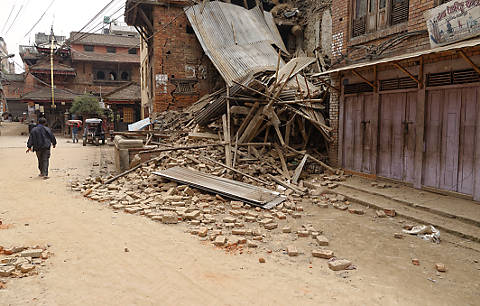
Poorly constructed additions often collapsed.

2015-04-26, before major aftershock
Recovery
As of 3 May 2015, life was slowly returning to normal in many areas, but hill areas to the north of the Kathmandu Valley appear to have been the worst affected in terms of both death and damage. Little aid has reached this area so far.

Low buildings did not necessarily survive any better than taller ones. This one was totally destroyed.

2015-04-26, before major aftershock
People are starting to recover their effects from damaged buildings and have begun some demolition work to reduce the hazard posed by damaged buildings. Power is back on in many places but not yet here. (We are depending on our two solar panels to keep phones and computers running.)

Another example of patchy damage. Two buildings here partially collapsed, but the remainder of the street withstood the shock.

2015-04-26, before major aftershock
Nepal does not lack sound building codes, and most recent, well-built buildings survived with little or no damage, as did our house. The most critical need for long-term recovery is to ensure that new buildings are capable of resisting earthquakes of this magnitude and somewhat larger. (Extreme earthquakes do not appear to strike this region, as they do Japan and some other places along the Ring of Fire.)
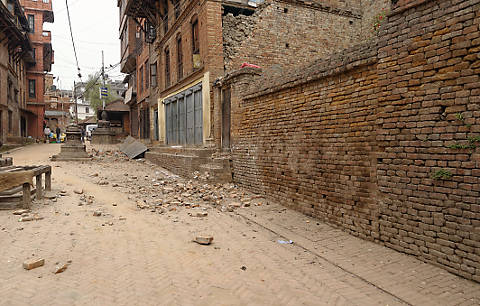
Even just one of these few bricks would probably kill you if it hit your head.

2015-04-26, before major aftershock
News Reports
The news reporting was, in some cases, disgraceful and irresponsible. In a quest for readership and ratings, the news media always focuses on the very worst or most dramatic episode they can find. At one point, a CNN headline claimed, "Nepal Nearly Destroyed." While the damage is very heavy, this is a gross exaggeration. I don't know how to rein in "disaster porn," because huge numbers of people are drawn to it, and it is a cash cow for the media.
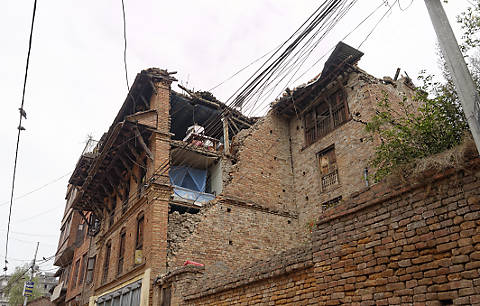
Many houses held together enough to save their occupants but dropped a wall. This house probably will have to be razed.

2015-04-26, before major aftershock
In the case of Nepal, exaggerating the severity of the damage will serve to keep tourists away for years, whereas a nearly normal October/November tourist season should be possible and would greatly help the million or so Nepalis whose livelihood depends on tourists. In this article I have tried to present a balanced view of the damage, which, as you can see, is indeed severe in some places and comparatively light in others.

All kinds of help are needed here.

2015-05-02
Aid
If you wish to send assistance, find an agency that provides in-kind aid that is less susceptible to corruption than cash donations. I suppose that the International Red Cross and the UN agencies would be good choices. Don't send your old T-shirts.
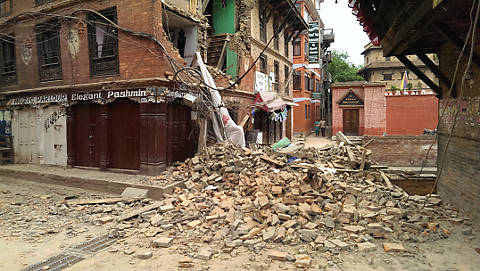
This is another example of a heavily-built brick structure that threw its gable end into the street.

2015-04-26, before major aftershock
Useful Web Sites
"Deadly earthquake Nepal – At least 7,142 people killed" from Earthquake-Report.com, with news about various aspects of the disaster.
"Poster of the Nepal Earthquake of 25 April 2015 - Magnitude 7.8" from the USGS, with lots of scientific data on a single large page.
"Earthquake - Nepal - April 2015" a 6-minute YouTube video from CAT news that calmly and accurately describes what happened.
"Magnitude 7.8 NEPAL (PDF!)" an excellent slide presentation from IRIS Education & Public Outreach and The University of Portland.
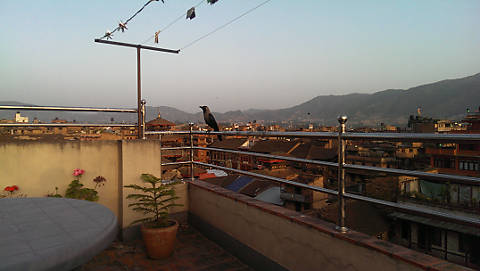
Our roof deck at sunset two days ago. Life is slowly starting to return to normal in beautiful Bhaktapur

2015-05-01, 6 days after the earthquake



News Bits
The links below will open in a new browser window or tab, depending on your browser; (Ctrl+click may behave differently):
In order to get the earthquake feature published rapidly, the usual capsule summaries have been omitted. Best links come first.
"Only Less Will Do" by Richard Heinberg
"Naomi Klein: Shock of Oil Price Plunge Is Opportunity World Must Seize"
"Amazon's trees removed nearly a third less carbon in last decade – study"
"Scrap fossil fuel subsidies now and bring in carbon tax, says World Bank chief" Major news!
"Global Shale Fail: Oil Majors Leaving Fracking Fields Across Europe, Asia"
"Revisiting the Shale Oil Hype: Technology versus Geology"
"IMF Pegs Canada's Fossil Fuel Subsidies at $34 Billion"
"Death of US Coal Exemplifies Need for Paradigm Shift for Global Energy System"
"The melting of Antarctica was already really bad. It just got worse."
"Europe submits U.N. climate pledge, urges U.S., China to follow"
"The target has to be achieved domestically rather than through offsets that allow member states to buy into carbon-cutting schemes outside Europe." This is really significant.
"World’s First Full-Scale ‘Clean’ Coal Plant Opens in Canada"
"Global warming is now slowing down the circulation of the oceans - with potentially dire consequences"
"China Presents the World's First Hydrogen-Fueled Tram" Wireless trams would be a great boon, if they work.
"China Designs the World's First Hydrogen Tram [VIDEO]"
"Rate of Climate Change to Soar by 2020s, with Arctic Warming 1°F Per Decade"
"Unintended Consequences: When Environmental "Goods" Turn Bad"
"The Modernist God That Failed" (Corbu, of course)
"Can the world economy survive without fossil fuels?"
"The Thirsty West: 10 Percent of California’s Water Goes to Almond Farming"
"Oceans Facing Carbon Rates Which Spurred Mass Die-Off 250 Million Years Ago"
"Cycling could be worth as much as £17 billion to the NHS - it’s worth the investment"
"Booting Corporate Power, Communities Are Taking Back Control of Their Water"
"Fight of the Century: Localization in a Globalized World"
"Economic Collapse Will Limit Climate Change, Predicts Climate Scientist" Surely this is the wrong way to go about it.
"The Brief, Tragic Reign of Consumerism - and the birth of a happy alternative"
"Paris to double city's cycling lanes by 2020"
"Suburbs such as Montgomery County rethink transit to court millenials"
"Cheap coal is a lie – stand up to the industry’s cynical fightback"
"American Companies Are Shipping Millions Of Trees To Europe, And It’s A Renewable Energy Nightmare"
"Paradise lost, or my childhood on a pre-Thatcher council estate" This is must-read if you are interested in the social effects of Thatcherism.
"The World Bank and the Battle for the Future of Farming"
"L.A. Builds Tiny Parks at Furious Pace"
"UK nuclear strategy faces meltdown as faults are found in identical French project"
"Kathmandu chokes beneath a blanket of pollution" and that's now the least of its problems...

About Carfree Times
Next Issue
The next issue of Carfree Times is scheduled for late summer 2015.
Subscribe to Carfree Times
Carfree Times is published quarterly at Carfree.com.
To receive e-mail notices of new issues, please visit the subscription page or
send e-mail with the word "Subscribe" in the subject line. We do not share our mailing list.
Write for Carfree Times
Interested in writing for Carfree Times? We welcome articles on a wide variety of subjects and offer an opportunity to publish letters to the editor and guest editorials. Drop us an e-mail.

Back to Carfree.com
Carfree Times Home
Back to Carfree Times Issue 77
Forward to Carfree Times Issue 79
E-mail
carfree.com
Text and illustrations, except for guest content, placed in the public domain

|

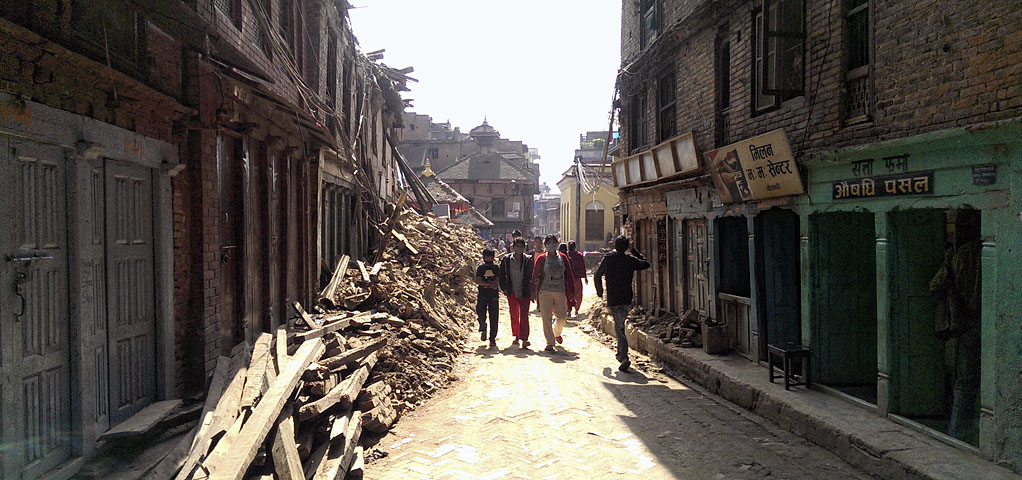






















![]()























